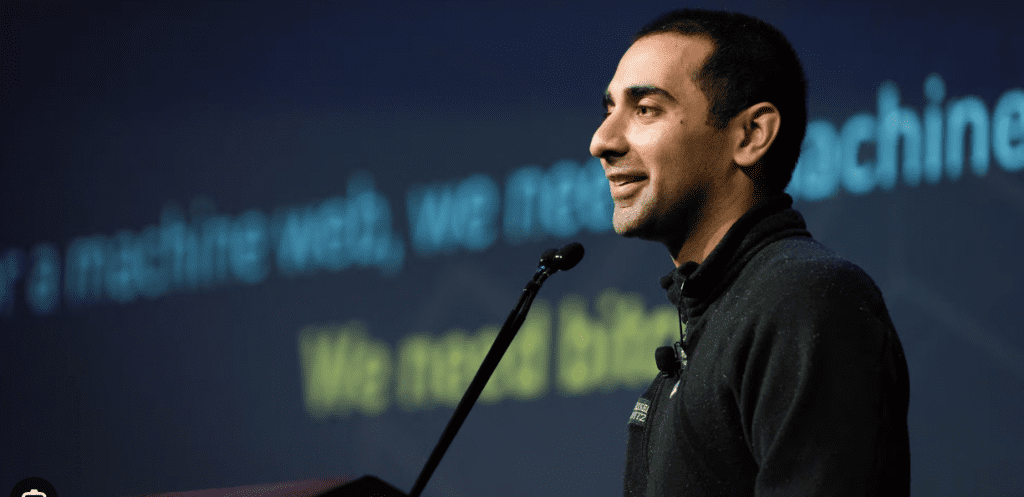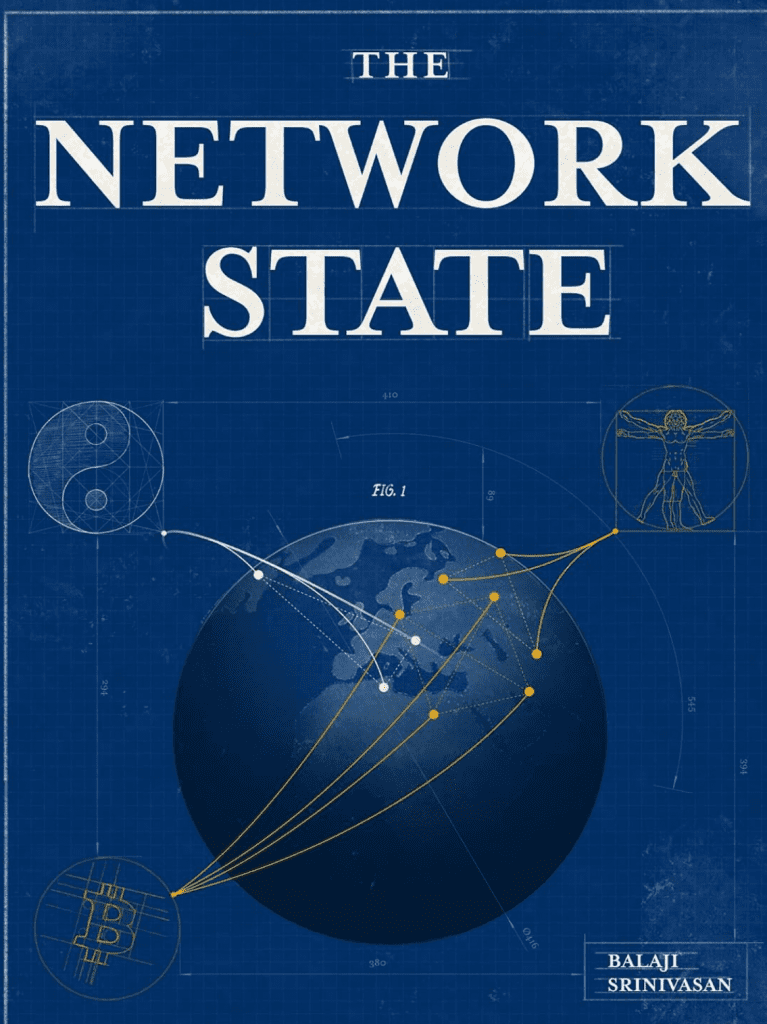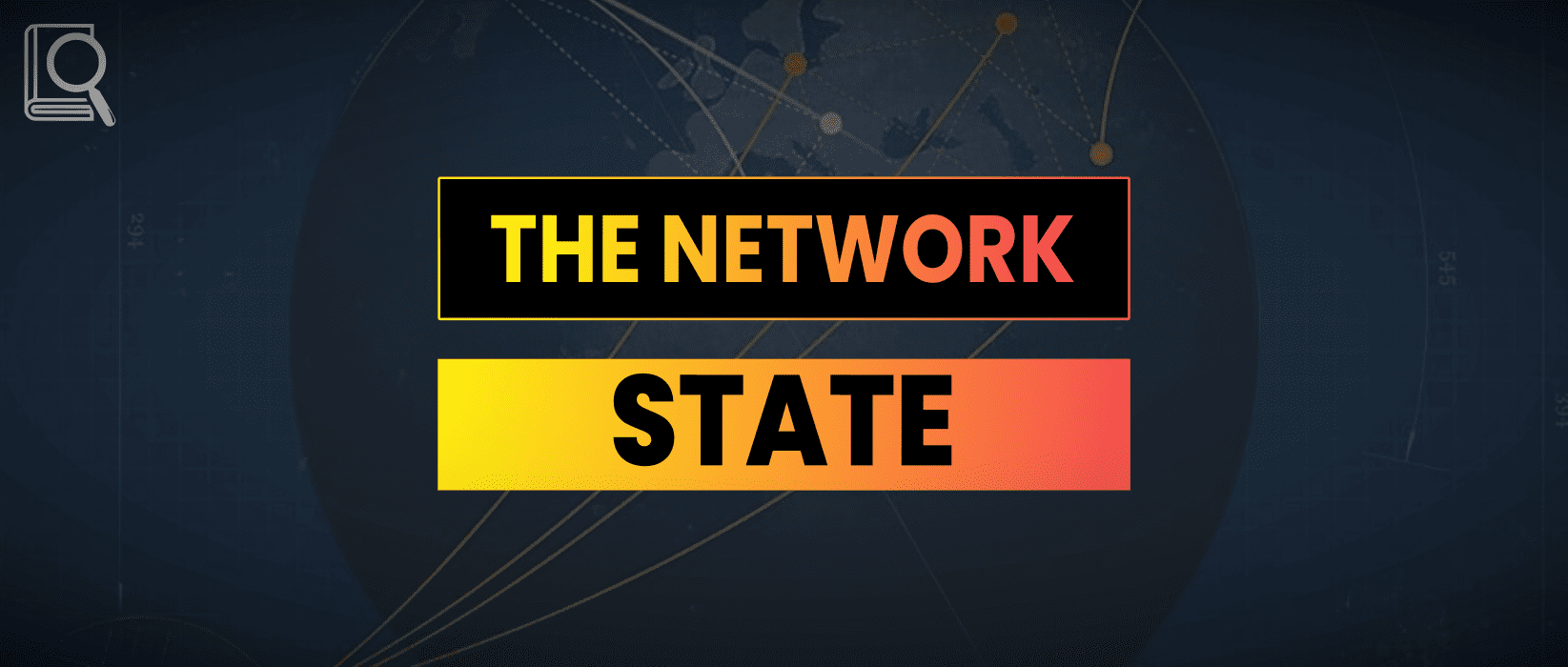Balaji Srinivasan’s The Network State argues that the internet has quietly become an alternative geography one capable of birthing entirely new, cloud native nations.
The book’s core thesis is that a “network state” begins as an online community with a moral purpose, proves its legitimacy through real time metrics, crowdfunds parcels of land across the world, and eventually gains diplomatic recognition as a sovereign entity.
While yesterday’s revolutions were fought with muskets or pamphlets, tomorrow’s will be waged with software, cryptocurrency, and social networks.
Srinivasan writes from the vantage point of a serial entrepreneur, former CTO of Coinbase, and angel investor in dozens of crypto start ups. Trained in electrical engineering and genomics at Stanford, he fuses technical depth with a historian’s eye for civilizational change, arguing that network states are the logical successor to the nation state just as the nation state once superseded the city state and the empire.

The book matters because it synthesizes disparate threads remote work, crypto capital formation, DAO governance, global migration, and the decline of institutional trust into a single blueprint for political entrepreneurship. It provides both an ideological narrative for people who feel homeless in existing polities and a tactical playbook for founders who believe exit can be more powerful than voice. Readers walk away with a novel framework for thinking about sovereignty that is native to the twenty first century’s facts on the ground: ubiquitous connectivity, programmable money, and a population accustomed to forming meaningful relationships online before ever meeting offline.
The nation state versus the network
Srinivasan begins with a historical contrast: the French Revolution institutionalized the nation state by aligning language, land, and law inside fixed borders; the American Revolution married liberty to territory at continental scale; and the Soviet experiment contended that ideology could override ethnicity. All three were “land first” revolutions. By contrast, the “network revolution” is “cloud first,” beginning with code and community rather than soil and steel. The internet severs the requirement that citizens live near each other for coordinated action, allowing alignment on values rather than ethnicity or geography.
Definition of a network state
A network state is a social network with an agreed upon leader, an integrated cryptocurrency, a sense of national consciousness, a capacity for collective crowdfunding, a portfolio of globally distributed territories that the community physically inhabits, and eventually international recognition. The journey from online forum to recognized polity passes through seven discrete milestones: building a founding community, organizing it as a network union, demonstrating collective action, crowdfund financing territory, achieving de facto jurisdiction over that land, negotiating recognition, and, finally, achieving strategic parity with legacy states.
Moral innovations and one commandment
Every successful network state must coalesce around a morally compelling mission. Srinivasan calls this the “one commandment”-a single, crystalline principle that differentiates the community from legacy jurisdictions. Examples range from quantified health (a state that guarantees citizens +10 years of lifespan) to radical privacy (a state that outlaws data hoarding) or carbon negativity (a state that sequesters more CO than it emits). The commandment functions as both an attractor for early adopters and a metric for external legitimacy.
Progressive proof of legitimacy
Because the network state starts without territory or recognition, its credibility derives from transparent metrics. Real time dashboards display population size, financial reserves, square meters under control, and compliance with the one commandment. This “proof of progress” is akin to the cryptographic proofs that secure blockchains: anyone can verify the claims without trusting a central authority. Over time the accumulation of public metrics persuades outsiders citizens, investors, and eventually other governments that the network state is real.
Network unions
Before it owns land, the proto state operates as a “network union,” a group chat with a balance sheet and a to do list. Network unions differentiate themselves from traditional labour unions in three ways: they are global from day one, they use software coordination rather than physical picketing, and they fight for positive sum outcomes (grants, scholarships, business partnerships) rather than zero sum wage negotiations. The union stage is crucial for learning how to mobilize members, resolve disputes, and distribute resources.
Crowdfunding polities
Borrowing startup logic, the network state treats land acquisition as a series A financing round. Members pool cryptocurrency into a special purpose vehicle that purchases small parcels houses, apartments, co working spaces wherever local laws make acquisition feasible. Because the parcels need not be contiguous, the state begins as an archipelago, stitched together by the cloud. Srinivasan notes that Airbnb and WeWork have already normalized the idea of a global distributed property network; the network state simply adds sovereignty and collective ownership.
Internet first, land last
The strategy reverses the traditional secessionist model. Rather than occupying land and issuing declarations, the network state nests within existing legal frameworks, often as a nonprofit or special economic zone tenant. Only after it has achieved scale measured in population, assets, and diplomatic sympathy does it negotiate for autonomy. This “reverse secession” minimizes violent confrontation because the founding population is already global, mobile, and economically self sufficient.
Diplomatic recognition as a marketplace
Srinivasan reframes international recognition not as a binary miracle but as a competitive market. Countries trade recognition for trade agreements, investment, military alliances, or ideological solidarity. The network state’s leverage grows as its GDP, residency incentives, and technological assets grow. Examples include how Singapore traded recognition for maritime security expertise in the 1960s or how Taiwan leverages semiconductor know how today. The network state will similarly barter access to its talent cloud and digital infrastructure.
The crypto political compass
Traditional left right axes fail to capture blockchain politics, leading Srinivasan to propose a two dimensional compass: centralized versus decentralized on one axis, and optimist versus pessimist on the other. A “decentralized optimist” believes exit is possible through technology; a “centralized pessimist” argues that only state control can mitigate existential risks. The network state is firmly in the decentralized optimist quadrant, advocating competition among jurisdictions in a Cambrian explosion of governance models.
Founding versus inheriting
Throughout history, most people inherit institutions; a minority found them. Founding requires technological leverage (printing press, firearms, steam engine), ideological narrative (liberalism, Marxism), and demographic alignment. Srinivasan insists that crypto provides the technical leverage, the one commandment supplies the narrative, and global talent mobility delivers the demographic. The sequence resembles a startup: idea, product market fit, funding, scaling, and exit (where “exit” equals sovereignty).
From startup cities to network states
Charter cities, special economic zones, and corporate campuses foreshadow elements of the network state but lack global scalability. They usually depend on a host nation for legal cover and cannot issue their own currency or passports. The network state corrects those deficiencies by starting borderless, making it immune to any single host’s legal shutdown, and then federating its enclaves into a cloud coordinated polity.
The certificate of existence
Drawing inspiration from Bitcoin’s block explorer, the certificate of existence is a cryptographically signed, timestamped record of the network state’s current census, financials, geospatial map, and compliance metrics. It is published daily on chain, giving any observer a tamper proof snapshot of sovereignty in progress. This artifact allows the nascent state to interface with banks, insurers, and other states that demand reliable data without having to trust a single minister of truth.
The history of startups and states
The latter half of the book offers a comparative timeline: the Dutch Republic pioneered joint stock companies in the 1600s; the United States adopted limited liability in the 1800s; Israel leveraged diaspora networks for capital and talent in the 1900s. Each wave compressed the time and capital needed to stand up a new polity. Crypto and the internet compress it further, lowering the cost of nation building from billions of dollars and decades of war to millions of dollars and years of coordinated software development.
The decentralized revolution
Srinivasan extends the argument beyond politics. Decentralization is rewiring finance (DeFi), media (social networks), science (open source bioinformatics), and defense (drone swarms). The network state is merely the highest institutional layer to flip from centralized to decentralized. He likens the process to the shift from mainframes to personal computers: once individuals tasted local autonomy, the expectation of control became irreversible.
Interoperability of network states
Multiple network states can interlink through smart contracts, forming a mesh of trade agreements, legal arbitration protocols, and migration corridors. The long term vision resembles a digital Hanseatic League where jurisdictional franchising becomes as easy as spinning up a software fork. The competition among network states exerts evolutionary pressure, eliminating badly governed entities and rewarding those that maximise citizen satisfaction relative to tax or membership fees.
The Network State Takeaways
- Begin with community, not territory, cultivate an online population aligned around a single moral innovation before pursuing land or legal recognition.
- Quantify legitimacy publish real time, on chain dashboards that track population, assets, acreage, and compliance with the “one commandment,” allowing outsiders to audit progress.
- Operate as a network union first, develop coordination muscles via small stakes collective goals group purchases, scholarships, lobbying before scaling to sovereignty.
- Finance land acquisitions through crypto crowdfunding, treat parcels as a Series A round and distribute tokenized ownership to citizen investors under transparent smart contract rules.
- Embrace an archipelagic footprint: buy non contiguous enclaves in jurisdictions with favorable property laws, then connect them culturally and economically through the cloud.
- Use reverse secession, integrate peacefully within existing legal frameworks, avoiding violent confrontation until scale provides negotiation leverage.
- Trade recognition as a commodity, offer host nations access to talent, capital, or specialized technology in exchange for incremental sovereignty concessions.
- Anchor governance in code, replace opaque bureaucracies with auditable smart contracts for voting, treasury management, and dispute resolution.
- Design for interoperability, adopt open standards that let citizens move identity, assets, and legal obligations across multiple network states, creating a competitive governance marketplace.
- Prioritise founder mindset over reformer mindset, treat institution building as a startup endeavour where rapid iteration, default transparency, and customer obsession (citizen satisfaction) are the norm.
- Leverage the crypto political compass, situate your strategy in the decentralized optimist quadrant, valuing exit over voice and innovation over regulation.
- Publish a daily certificate of existence, deliver cryptographic evidence of your state’s census, finances, and land registry to build trust with citizens, investors, and other governments.
- Align incentives through digital passports, issue soul bound tokens that encode rights and duties, enabling programmable citizenships tailored to diverse moral commandments.
- Prepare for a Cambrian explosion of polities, expect thousands of network states experimenting with governance models, accelerating institutional evolution in the same way open source software accelerated code.
- Measure success by net migration and net assets, track how many people and how much capital voluntarily move into your jurisdiction; these metrics reveal genuine product market fit for governance.



